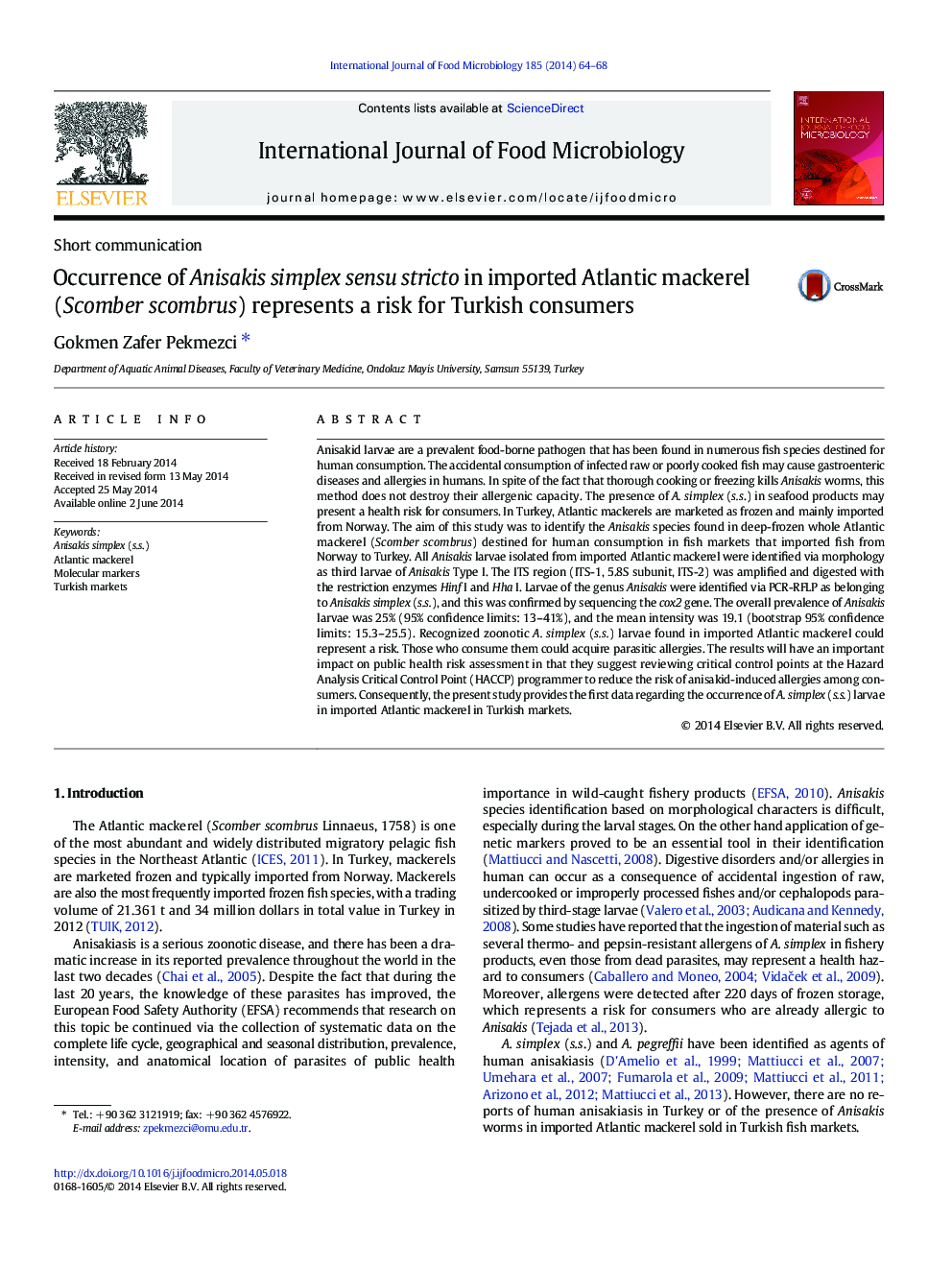| کد مقاله | کد نشریه | سال انتشار | مقاله انگلیسی | نسخه تمام متن |
|---|---|---|---|---|
| 4366859 | 1616598 | 2014 | 5 صفحه PDF | دانلود رایگان |

• Frozen and whole Scomber scombrus are mainly imported to Turkey from Norway.
• The prevalence of Anisakis spp. in the viscera and muscle was found to be 25% and 17.5%, respectively.
• Mean intensities of 17.2 and 2.5 were found in the viscera and muscle, respectively.
• A. simplex (s.s.) was identified via RFLP and confirmed by sequencing the cox2 gene.
• This is the first recorded occurrence of A. simplex (s.s.) in S. scombrus from Turkish markets, and A. simplex (s.s.) may present a health risk for Turkish consumers.
Anisakid larvae are a prevalent food-borne pathogen that has been found in numerous fish species destined for human consumption. The accidental consumption of infected raw or poorly cooked fish may cause gastroenteric diseases and allergies in humans. In spite of the fact that thorough cooking or freezing kills Anisakis worms, this method does not destroy their allergenic capacity. The presence of A. simplex (s.s.) in seafood products may present a health risk for consumers. In Turkey, Atlantic mackerels are marketed as frozen and mainly imported from Norway. The aim of this study was to identify the Anisakis species found in deep-frozen whole Atlantic mackerel (Scomber scombrus) destined for human consumption in fish markets that imported fish from Norway to Turkey. All Anisakis larvae isolated from imported Atlantic mackerel were identified via morphology as third larvae of Anisakis Type I. The ITS region (ITS-1, 5.8S subunit, ITS-2) was amplified and digested with the restriction enzymes Hinf I and Hha I. Larvae of the genus Anisakis were identified via PCR-RFLP as belonging to Anisakis simplex (s.s.), and this was confirmed by sequencing the cox2 gene. The overall prevalence of Anisakis larvae was 25% (95% confidence limits: 13–41%), and the mean intensity was 19.1 (bootstrap 95% confidence limits: 15.3–25.5). Recognized zoonotic A. simplex (s.s.) larvae found in imported Atlantic mackerel could represent a risk. Those who consume them could acquire parasitic allergies. The results will have an important impact on public health risk assessment in that they suggest reviewing critical control points at the Hazard Analysis Critical Control Point (HACCP) programmer to reduce the risk of anisakid-induced allergies among consumers. Consequently, the present study provides the first data regarding the occurrence of A. simplex (s.s.) larvae in imported Atlantic mackerel in Turkish markets.
Journal: International Journal of Food Microbiology - Volume 185, 18 August 2014, Pages 64–68